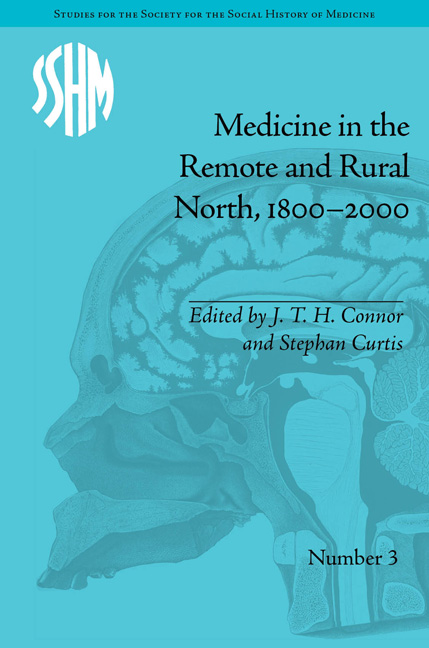Book contents
- Frontmatter
- CONTENTS
- Acknowledgements
- List of Contributors
- List of Figures and Tables
- Introduction: Cores/Peripheries – Rural/Remote: Medicine, Health-Care Delivery and the North
- Part I Remote Medicine and the State
- Part II Doctors and Doctoring in Remote Areas
- 5 A Country Doctor: Health Care in a Mid-Nineteenth-Century Swedish Remote Area
- 6 Medical Reports from the 1800s and What they Tell about Health Conditions, Population and the Work of Doctors in Peripheral Norway
- 7 ‘Medicine is Here to Stay’: Rural Medical Practice, the Northern Frontier and Modernization in 1930s' Newfoundland
- 8 Policing Practitioners on the Periphery: Elite Physicians and Profession-Building in a Bicultural Province, 1920–39
- Part III Women, Health Care and the Practice of Medicine
- Notes
- Index
6 - Medical Reports from the 1800s and What they Tell about Health Conditions, Population and the Work of Doctors in Peripheral Norway
from Part II - Doctors and Doctoring in Remote Areas
- Frontmatter
- CONTENTS
- Acknowledgements
- List of Contributors
- List of Figures and Tables
- Introduction: Cores/Peripheries – Rural/Remote: Medicine, Health-Care Delivery and the North
- Part I Remote Medicine and the State
- Part II Doctors and Doctoring in Remote Areas
- 5 A Country Doctor: Health Care in a Mid-Nineteenth-Century Swedish Remote Area
- 6 Medical Reports from the 1800s and What they Tell about Health Conditions, Population and the Work of Doctors in Peripheral Norway
- 7 ‘Medicine is Here to Stay’: Rural Medical Practice, the Northern Frontier and Modernization in 1930s' Newfoundland
- 8 Policing Practitioners on the Periphery: Elite Physicians and Profession-Building in a Bicultural Province, 1920–39
- Part III Women, Health Care and the Practice of Medicine
- Notes
- Index
Summary
Summary
Reports of Norwegian medical officers from the nineteenth and twentieth centuries provide detailed information for the entire country down to the level of individual health districts. The nineteenth-century reports are of special medical historical interest. The design of the reports makes it possible to compare the real health situation to the perception of it held by health personnel. Data on epidemic diseases from the period 1868–1900 have been excerpted and compared to the written descriptions in the reports and interpreted in relation to the overarching medical and social contexts. This analysis illustrates the importance of health perception as an independent historical agent.
Diseases, Perceptions and Health Services
The main argument here is that a relationship exists between the health conditions in a population, how this health situation is perceived and the function of the health services. This relationship is more the result of shifting perceptions than the actual health of the population and the conditions in which the people live.
These perceptions are held by people at different levels in the medical hierarchy from the lay patients, through various categories of health personnel, up to the central national authorities. These ideas and beliefs make up the basis for attitudes in health matters which exert influence when setting priorities. There-fore perceptions and attitudes are key to the understanding of developments in medicine, health and health services.
- Type
- Chapter
- Information
- Medicine in the Remote and Rural North, 1800–2000 , pp. 115 - 128Publisher: Pickering & ChattoFirst published in: 2014



